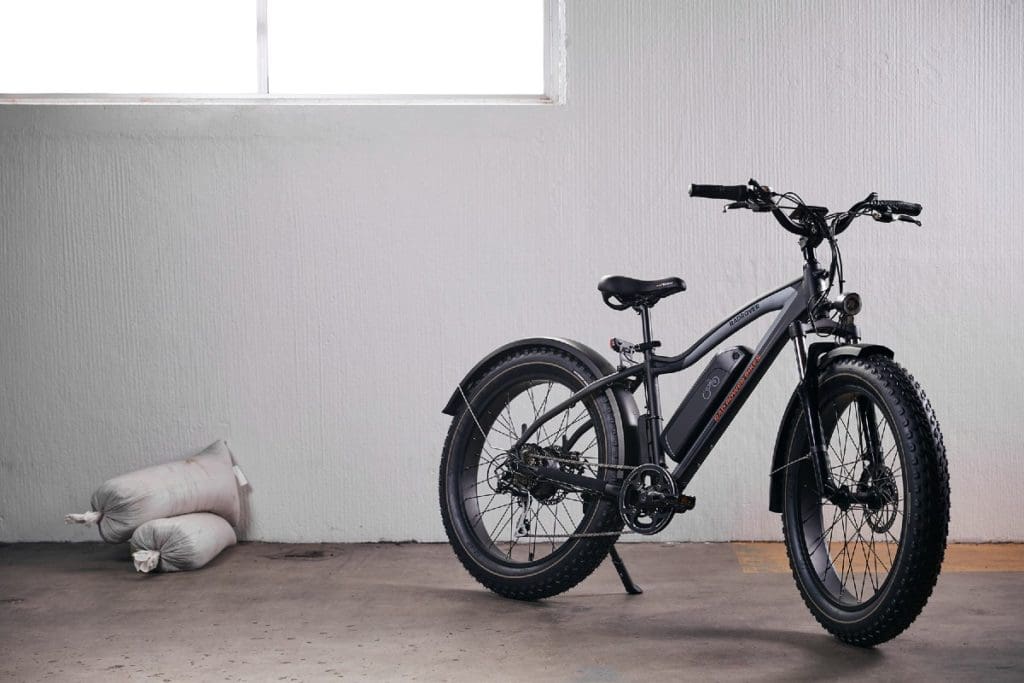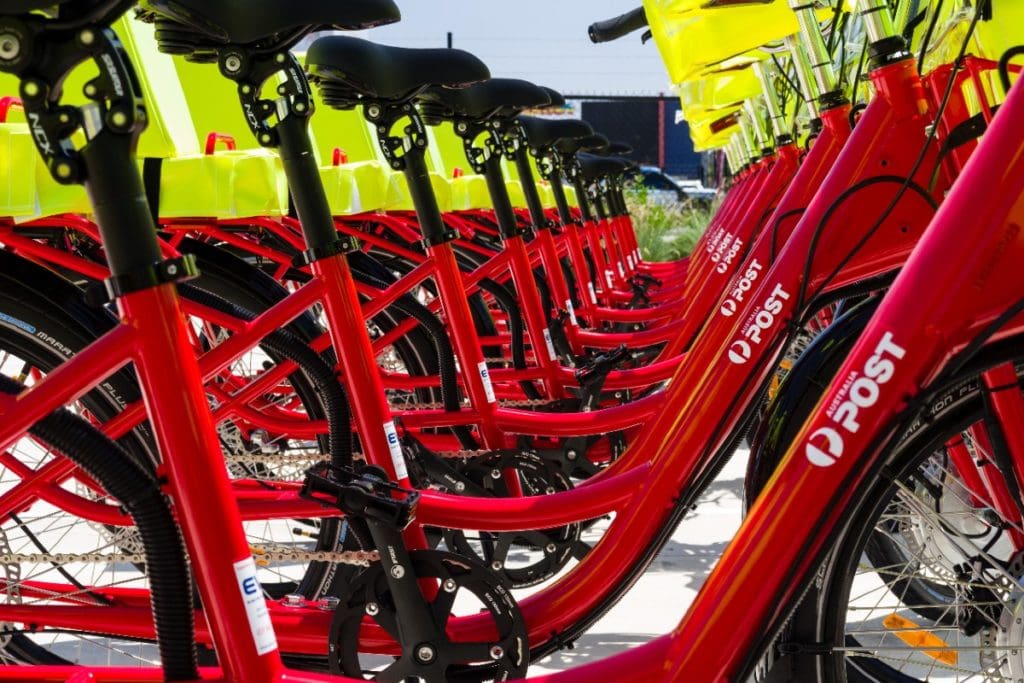Productivity Commission Calls for Consideration of Higher e-Bike Speeds

Sydney, NSW
A NSW Productivity Commission report has advocated a review of e-bike speeds, current power limits for cargo bikes and the State’s ban on electric scooters, saying relaxing these regulations could bring substantial benefits.
The Regulating Emerging Technologies report, released in November, focuses on personal mobility devices, e-bikes and drones, and says they “have the potential to transform the movement of people and goods” if better, “forward-looking” regulation is in place.
“Australian governments should review e-bike regulation to support the use of faster e-bikes while managing safety risks,” the report says.
“Many international jurisdictions permit the use of e-bikes with faster maximum speeds and power outputs. Expanding the range of e-bikes available could encourage more people to use e-bikes, and to use them more regularly and for greater distances.
“Just 5% of NSW bike rides were estimated to be undertaken by e-bikes in 2021, whereas 40 to 50% of bikes sold in Germany and Netherlands are e-bikes.”
According to the commission, a national review of e-bike regulations would deliver the greatest benefits because it would encourage national consistency, with Commonwealth regulations on what types of devices may be imported into Australia and State-based regulation of what devices were permitted on roads.
“Adjusting e-bike regulation could also pave the way for less congestion on our roads, cheaper deliveries by our booming e-commerce sector, and lower greenhouse gas emissions,” the commission states.
Short-term measures
It recommends two short-term measures:
• a modest increase in the maximum speed and/or power output for private use e-bikes in public areas
• regulating the use of e-bikes on private property to ensure they are ridden safely, regardless of location
“In the medium term, an option would be to regulate more powerful private-use e-bikes (such as speed pedelecs) in recognition of the heightened safety risks—either as their own class of e-bike or as part of a broader ‘moped’ class,” it suggests.
“This could involve consideration of: appropriate speed and power limits, registration and insurance requirements, licensing of riders, age restrictions, which areas (eg. cycle paths, roads) they can be used.
“Further research would need to be undertaken into the benefits and costs of each option. This could draw on the experience of overseas jurisdictions that have already modified their laws for e-bikes.
“Restrictions on the speed of e-bikes are not keeping pace with increased consumer demand for faster e-bikes in NSW and Australia. The online availability of high-speed e-bikes and conversion kits has created growing safety concerns for riders and pedestrians in the absence of appropriate regulation.”
The Regulating Emerging Technologies report builds upon a Regulating Personal Mobility Devices (PMDs) study produced by the Centre for International Economics and released in April.
That analysis found an appropriate regulatory framework could enable uptake of PMDs of between 8 million trips and 10 million trips per year by 2041, compared to 600,000 trips per year if regulations remain at their current settings.
It claims improved regulation could also unlock up to $87 million in net economic benefits for NSW by 2041.
More Power for Commercial Cargo Bikes
The Regulating Emerging Technologies report says provision for more powerful cargo bikes should also be considered as part of its recommended national review, noting the same power limits apply for bikes used for commercial and private use.
“This power limit is limiting their potential to carry heavier loads at a time where e-commerce delivery is booming,” it observes.
“e-Cargo bikes can be up to 60% faster than vans for last-mile deliveries in urban areas, offering potential for significant cost savings given that over half of freight costs come from the last mile.”
The report highlights Australia Post’s fleet of 2,500 e-cargo bikes make more than 2.5 million deliveries of mail and small parcels to customers per day.
“The bikes offer a higher load capacity than postie motorcycles and there have been no serious accidents or deaths in the last decade,” it says.
“This is an area of rapid innovation, with new devices emerging. Starting the conversation about the right regulatory settings now will position us to benefit from future innovation.”

Industry self-determination
The report advocates “outcome-focused, tech-neutral regulation” that focuses on the desired objectives, such as high safety standards, rather than prescribing how these objectives are met.
It says that “leaves it open for businesses to decide the technology or business models to be used”.
“Regulations that are outcomes-focused and technology-neutral will help future-proof our regulatory systems and maximise innovation opportunities.
“Governments should be regularly scanning the horizon for new technologies and updating regulations to respond to the opportunities and risks posed.”
The report also calls for a revision of laws that restrict other PMDs to use on private property, potentially bringing NSW into line with other jurisdictions.
“A trial of personal mobility devices would help test and refine regulatory approaches while addressing safety risks,” it advocates.
“Governments should also embrace a culture of regulatory experimentation by not being afraid to implement regulatory trials and refine the rules based on these trials. A no-risk, no-reward mentality will be required if we are to continue benefitting from the innovation spirit that has delivered the high standards of living we enjoy today.”

Australian city and regional infrastructure development is much more similar to North America (USA & Canada) than it is to Europe with its much older cities and villages with narrow streets, etc. It does not make sense, nor is it really economically feasible to continue with European regulations in the Australian e-bike market. The Californian regulations related to 3 different classes of e-bikes would be much more suitable for all Australian states, not just NSW. https://evelo.com/blogs/ebike-laws/california. Class 1 & 2 e-bikes to be allowed on bike paths and class 3 e-bikes to be on the road. Similar regulations should apply to e-scooters. An electric moped specification for more powerful electric bikes with up to 2000W motors and speed limited to 50 km/h for riders already licensed to drive cars or to ride motorbikes could be further extension, with those e-mopeds meeting minimum specifications for lighting, indicators & brakes and the riders required to be insured and wearing motorbike helmets and also travel on the road. Cargo e-bikes & e-trikes could meet the power and speed regulations applicable to class 3 e-bikes.
Thanks Kurt. There are certainly strong similarities between the US and Australian urban environments.
Given current technologies already being used by e-bike and scooter share services, it would seem possible to have bikes appropriately speed-limited according to their location in a particular zone or thoroughfare. Then you wouldn’t need to have different bikes for different zones. That would fully capitalise upon one of the strengths of cycling as a mode of transportation – the ability use bike paths, bike lanes and other roads to reach a destination.